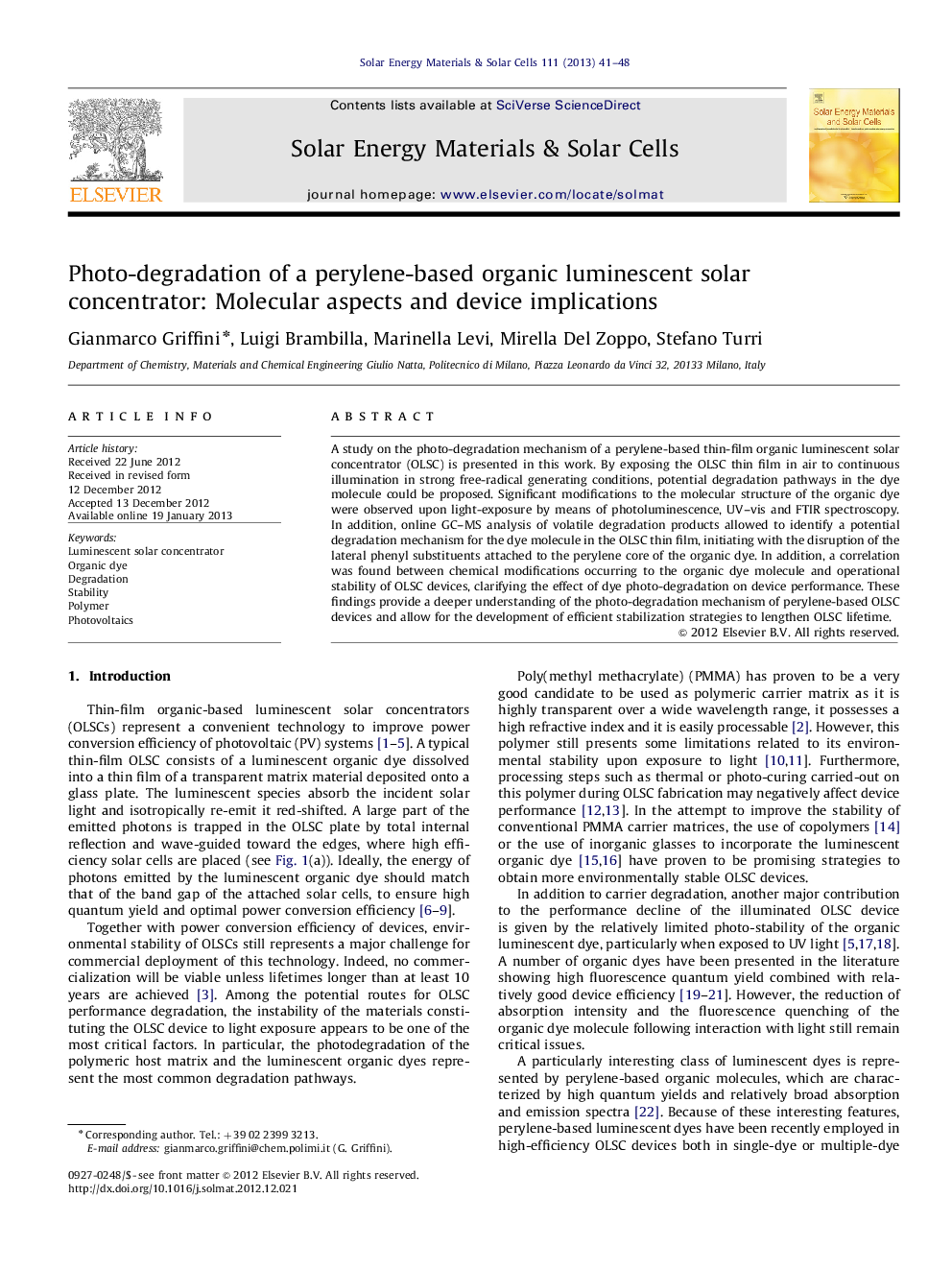| Article ID | Journal | Published Year | Pages | File Type |
|---|---|---|---|---|
| 78316 | Solar Energy Materials and Solar Cells | 2013 | 8 Pages |
A study on the photo-degradation mechanism of a perylene-based thin-film organic luminescent solar concentrator (OLSC) is presented in this work. By exposing the OLSC thin film in air to continuous illumination in strong free-radical generating conditions, potential degradation pathways in the dye molecule could be proposed. Significant modifications to the molecular structure of the organic dye were observed upon light-exposure by means of photoluminescence, UV–vis and FTIR spectroscopy. In addition, online GC–MS analysis of volatile degradation products allowed to identify a potential degradation mechanism for the dye molecule in the OLSC thin film, initiating with the disruption of the lateral phenyl substituents attached to the perylene core of the organic dye. In addition, a correlation was found between chemical modifications occurring to the organic dye molecule and operational stability of OLSC devices, clarifying the effect of dye photo-degradation on device performance. These findings provide a deeper understanding of the photo-degradation mechanism of perylene-based OLSC devices and allow for the development of efficient stabilization strategies to lengthen OLSC lifetime.
Graphical abstractFigure optionsDownload full-size imageDownload as PowerPoint slideHighlights► The photostability of a thin film organic luminescent solar concentrator is studied. ► The luminescent dye undergoes significant molecular changes during light exposure. ► A degradation mechanism for the organic dye is proposed. ► Devices are fabricated and tested upon exposure time. ► Decrease in device performance correlates with molecular modifications of the dye.
